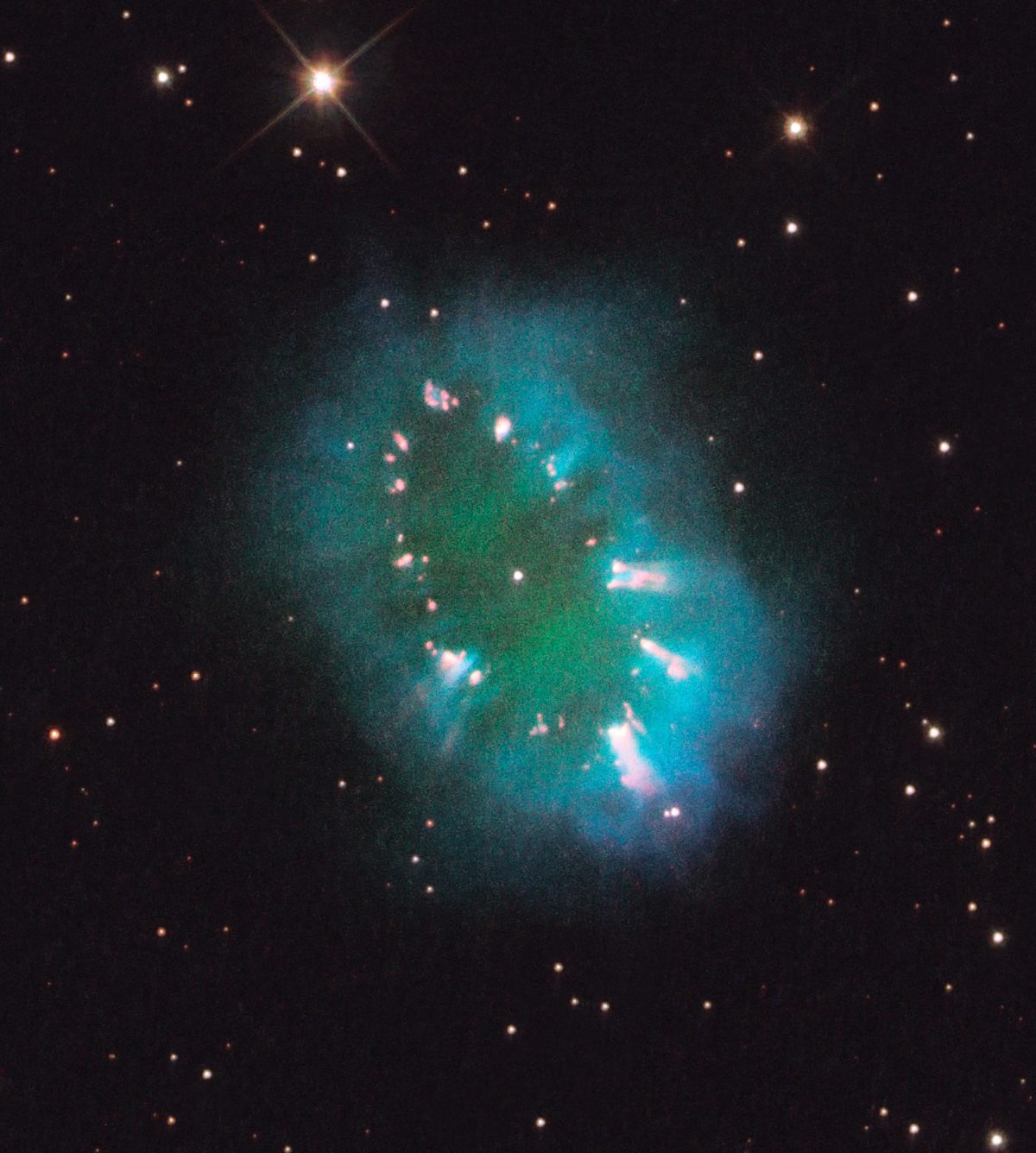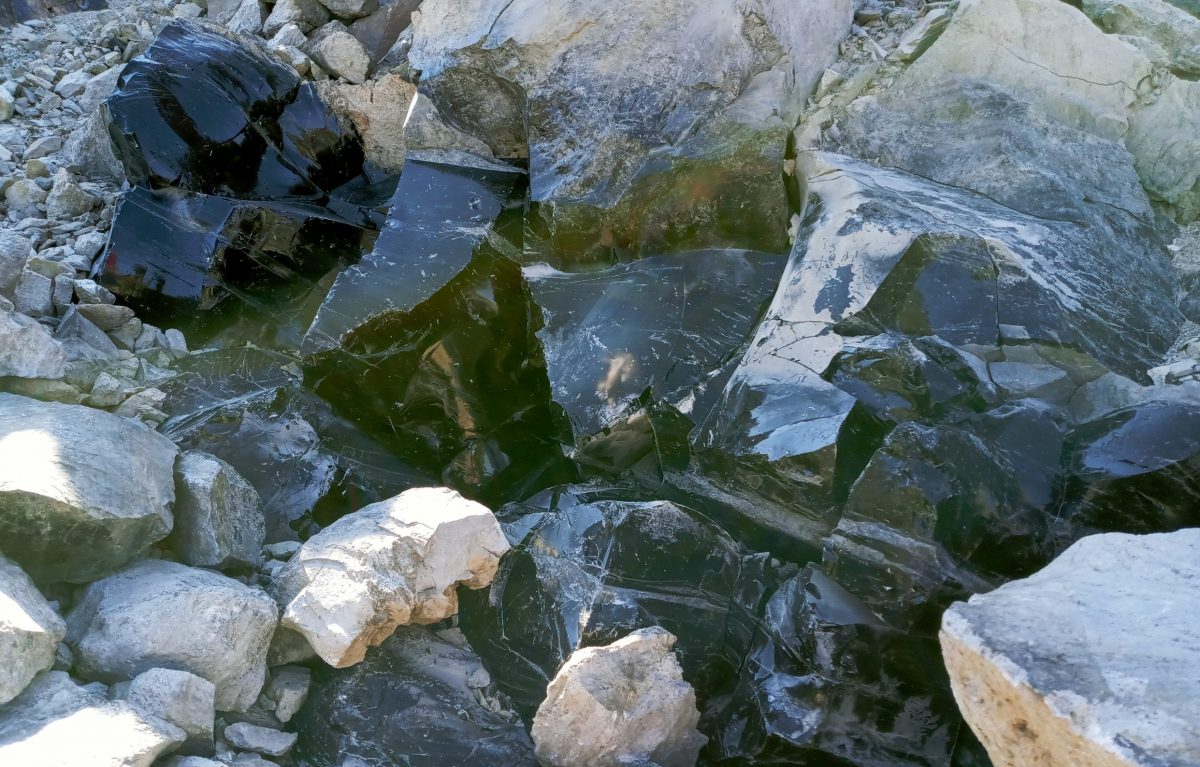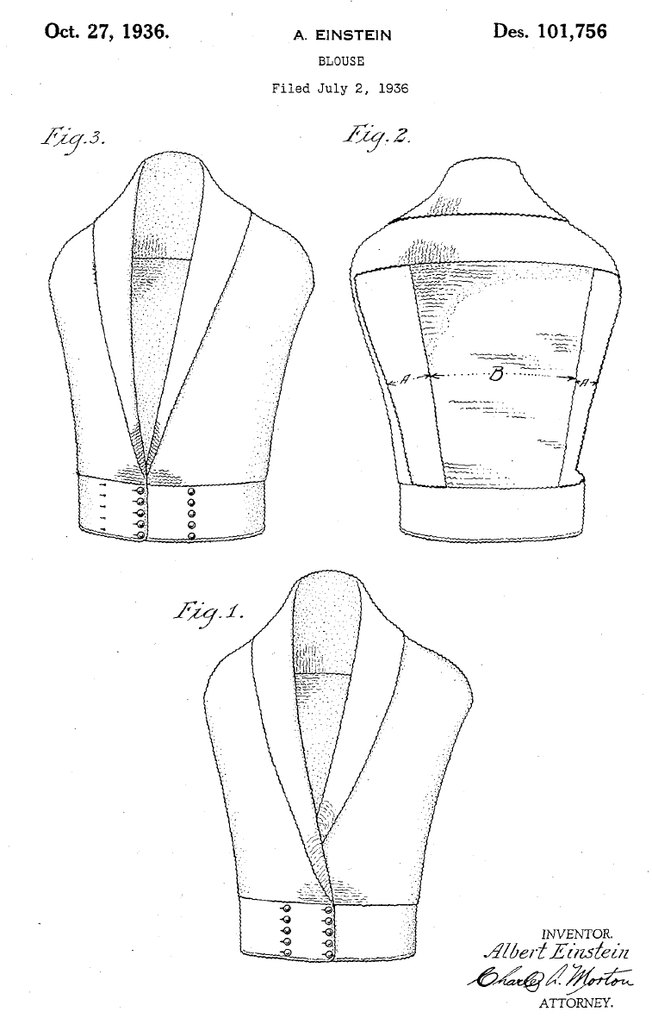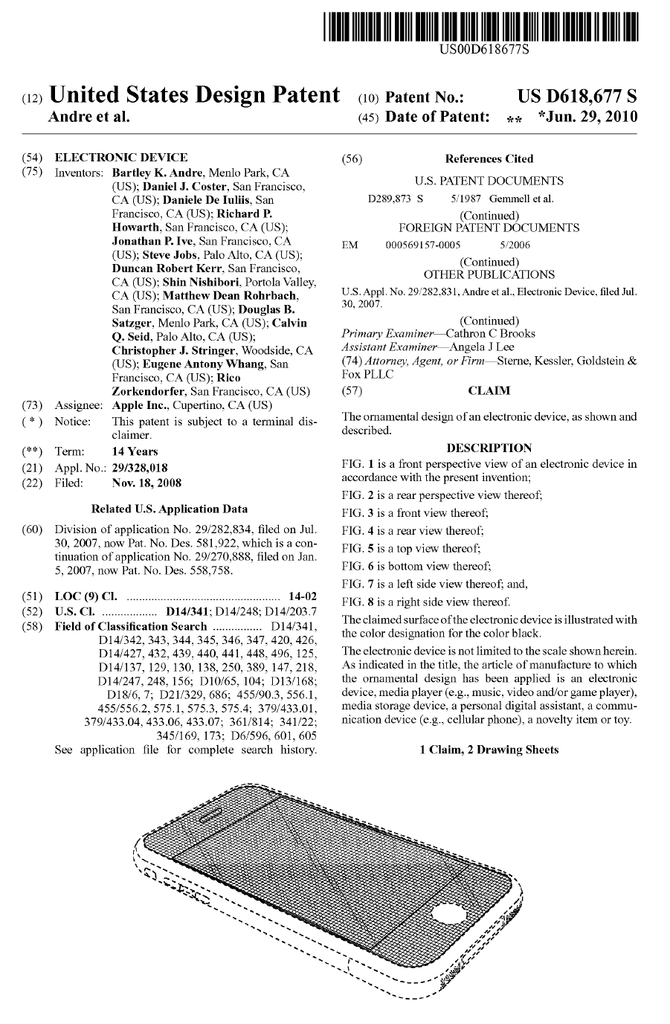Patent marking can be important for obtaining full recovery of infringement damages. When enforcing a patent against an infringer in the United States, damages for infringement of a patented article can usually be recovered only from the date the infringer had actual or constructive notice of the patent(s), whichever comes first. Actual notice requires the affirmative communication of a specific charge of infringement by the patentee to the accused infringer, such as in a cease-and-desist letter or filing an infringement lawsuit. Constructive notice is established by the patentee properly marking patented articles, regardless of whether a particular infringer actually sees that patent notice on products.
The following is a brief overview of basic U.S. patent marking legal requirements as well as guidance about how to properly implement patent marking. A more detailed treatment (with extensive examples) is provided in the Patent Marking Guide.
The U.S. Marking Requirement
The U.S. patent laws provide the following statutory marking requirement:
“Patentees, and persons making, offering for sale, or selling within the United States any patented article for or under them, or importing any patented article into the United States, may give notice to the public that the same is patented, either by fixing thereon the word ‘patent’ or the abbreviation ‘pat.’, together with the number of the patent, or by fixing thereon the word ‘patent’ or the abbreviation ‘pat.’ together with an address of a posting on the Internet, accessible to the public without charge for accessing the address, that associates the patented article with the number of the patent, or when, from the character of the article, this can not be done, by fixing to it, or to the package wherein one or more of them is contained, a label containing a like notice. In the event of failure so to mark, no damages shall be recovered by the patentee in any action for infringement, except on proof that the infringer was notified of the infringement and continued to infringe thereafter, in which event damages may be recovered only for infringement occurring after such notice. Filing of an action for infringement shall constitute such notice.”
35 U.S.C. § 287(a)
These statutory marking requirements apply to all types of U.S. patents: utility, design, and plant. Having a marking requirement helps to avoid innocent infringement situations, among other things.
Patent Marking Provides Constructive Notice
Marking patented articles provides constructive notice to the public that an article is patented. To be legally sufficient to establish constructive notice, the patentee must be able to prove that substantially all of the patented articles being distributed were properly marked, and that once marking was begun, the marking was substantially consistent and continuous. If marking is defective at first, curing those defects going forward is possible. But full compliance with marking requirements to provide constructive notice to infringers is not achieved until the time the patentee consistently marked substantially all of the patented products, and if marking was deficient for a time then constructive notice will not be provided unless and until proper marking occurs with subsequent sales.
Possible Exceptions to Marking Requirements
The most important exception to the marking requirement is where the patentee has not sold any patented articles. When there are no products to mark, there is no failure to mark and therefore no bar to recovery of pre-suit damages.
Additionally, because the marking statute refers only to a “patented article”, patents with method or process claims are treated differently. Neither marking (constructive notice) nor actual notice is required to obtain back damages for infringement of asserted patents having only method or process claims. For patents having both apparatus and method claims, marking might still be required (if apparatus claims are asserted) and is therefore recommended.
Licensee(s) and Other Authorized Parties Must Mark Too
Marking requirements apply not only to the patentee but anyone making, selling, or offering for sale the patented article “for or under” the patentee or importing it into the U.S. Where a patent is licensed to another, expressly or impliedly, or is the subject of a covenant not to sue or the like, the other entity is required to mark as well. Authorized activities by an outsourced manufacturer or authorized seller are treated as if they are by the patentee in terms of marking requirements in this respect. Failure of a licensee or other authorized user to consistently mark substantially all licensed products will frustrate efforts to establish constructive notice.
The requirement for licensees and authorized users is subject to a rule of reason. Some instances of omitted marking by others might be excused so long as the patentee makes reasonable efforts to ensure their compliance with marking requirements. It is recommended that any license for a U.S. patent obligate the licensee to comply with marking requirements. If a part (sub-component) is sold so that an authorized downstream reseller or importer will use it and other parts to assemble a patented article, a patent marking notice should be provided with instructions to affix it to the fully-assembled patented article.
How to Implement Patent Marking: Two Possibilities
There are two ways to mark patented articles in accordance with U.S. law: physical or virtual marking.
Physical Marking
Physical patent marking (which can also be called conventional or traditional marking) involves fixing notices on the patented articles themselves in a way that associates the patented article with the number of the patent. Such a notice must include the word “patent” or the abbreviation “pat.”, together with the number of the patent.
If the nature of the patented article means such a notice cannot be fixed to the patented article itself, such as due to size constraints or where the article is a fluid or powder, the notice can instead be placed on a label fixed either to the patented article or to a package containing one or more of the patented articles. This is an alternate form of physical marking that is appropriate if (and only if) there is a legitimate reason the marking notice cannot be directly fixed to the article. And that reason should involve more than mere convenience or subjective preference.
An example of a proper physical patent marking notice (for the fictitious U.S. Pat. No. 00,000,000) would be the following fixed directly on an article covered by the claims of the indicated patent:
Pat. 00,000,000
If multiple patents apply to the same patented article, they can be listed together. It is not necessary to repeat the word “patent” or abbreviation “pat.” before each patent number in such a list. Pluralizing the word “patent” is generally fine, as is the presence of an additional word or abbreviation, such as in “patent number 00,000,000” or “pat. nos. XX,XXX,XXX and YY,YYY,YYY”. The use of “U.S. patent” or “U.S. pat.” would also be acceptable. The text of the notice should be in English.
Virtual Marking
Virtual patent marking is an acceptable alternative to physical marking. It can be useful in situations where all the patent information required to provide constructive notice cannot easily fit on the patented article or even its label, such as where there are multiple patents that apply to an article that is fairly small in size. As the number of digits in patent numbers increases, this sort of difficulty increases. Virtual marking can also be helpful in situations where different patents are associated with different products but having multiple product-specific notices is burdensome—a single notice template might be used listing a URL for a web page with patent association information for multiple products. For instance, virtual marking can help minimize the need to replace or modify molds used to create a patent marking notice directly on molded articles as new patents issue.
Implementing virtual patent marking involves fixing notices on the patented articles themselves in a way that associates the patented article with the number of the patent. Such a virtual marking notice must use the word “patent” or the abbreviation “pat.” together with an address of a posting on the Internet (that is, a web page URL), accessible to the public without charge for accessing the address.
If the nature of the patented article makes means such a notice cannot be fixed to the patented article itself, the virtual marking notice (indicating “patent” or “pat.” together with a URL) can instead be placed on a label fixed either to the patented article or to a package containing one or more of the patented articles. This is an alternate form of virtual marking that is appropriate if (and only if) there is a legitimate reason the virtual marking notice cannot be directly fixed to the article. And that reason must involve more than mere convenience or subjective preference.
An example of a proper virtual patent marking notice fixed on a patented article or its label is the following:
Pat. www.example.com/patents
The main feature of virtual patent marking is that the information associating the patented article with the number(s) of the patent(s) that cover it appears on a freely-accessible web page rather than directly on the article or its label. There is still a requirement for a sufficient notice on the patented product or its label. A marking web page, alone, is insufficient unless there is also a proper notice on the patented product or its label to direct people to that web page’s address. Moreover, a virtual marking notice on a product or its package is insufficient without an acceptable posting accessible from the identified Internet address.
The difference between physical and virtual marking really involves the manner of conveying the required association between the patent number(s) and the patented article. With traditional physical patent marking, the association is implicit in terms of which patent numbers are included in or omitted from a notice fixed to a particular product or its label. In virtual marking, the notice fixed to the product or its label merely directs the public to a web page but the web page must further provide an association between given patent(s) and the specific product(s) that practice those patent(s).
Courts have said that virtual patent marking does not allow a patentee to avoid the traditional burden of determining which patent(s) apply to specific products and indicating that patent-to-product association. The patentee cannot shift that burden to the public. A web page that presents a “research project” forcing visitors to determine patent-to-product association(s) on their own fails to provide constructive notice. Any web page lacking the required “association” between the patent(s) and patented article(s) is legally deficient and will not provide constructive notice allowing recovery of pre-suit infringement damages.
Certain courts have found the following to be insufficient for virtual marking:
- A web page listing all of a company’s patents with an indication that “one or more” listed patents “may be used” by unspecified products within a stated product category (cite)
- A web page listing multiple patent numbers/titles and grouping them by product category, without indicating which specific products within each category were covered by specific patents (cite)
- A table on a web page listing patent numbers and titles but lacking any product information (where the company sold multiple products and one was unrelated to its patents) (cite)
- Patent-to-product associations indicated somewhere other than on the virtual patent marking web page (cite)
- Failing to put a notice indicating a virtual marking URL on hardware sold by a licensee that had pre-installed software that made the combined hardware-plus-software product subject to an asserted patent (cite)
- Affixing a notice on patented articles containing only a URL without that Internet address appearing together with the word “patent” or abbreviation “pat.” (cite)
False Patent Marking Prohibited
An important related concept is false patent marking. False marking involves marking (or advertising) products as patented when they are not, or marking (or advertising) products as “patent pending” when no patent application has been filed, with an intent to deceive. It also applies to intentional counterfeiting. Penalties apply to intentional false marking (35 U.S.C. § 292). Although the patent laws exclude from the scope of false marking the indication of an expired patent that once applied to the marked product. Also, there is no liability for honest mistakes about whether or not a patent applies.
It is important to only use patent marking where there is a reasonable basis to believe that the product is covered by the indicated patent(s). Patents that do not apply to a given product must not be marked on it (consider also any invalidation or cancellation of a given patent for continued marking). In the virtual marking context, patent-to-product associations must be specific enough to avoid false marking. Imprecise, blanket statements on virtual marking web pages implicating multiple patents and multiple products might give rise to false marking if done for purposes of deceiving the public about which patents, if any, apply to particular products. More generally, avoid marking products with any “patented” language that is confusing, geographically vague, or misleading with respect to that product’s patent status in the USA.
More comprehensive information available in the Patent Marking Guide

Austen Zuege is an attorney at law and registered U.S. patent attorney in Minneapolis whose practice encompasses patents, trademarks, copyrights, domain name cybersquatting, IP agreements and licensing, freedom-to-operate studies, client counseling, and IP litigation. If you have patent, trademark, or other IP issues, he can help.












